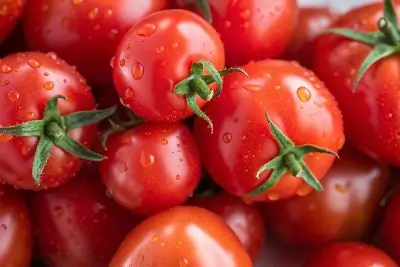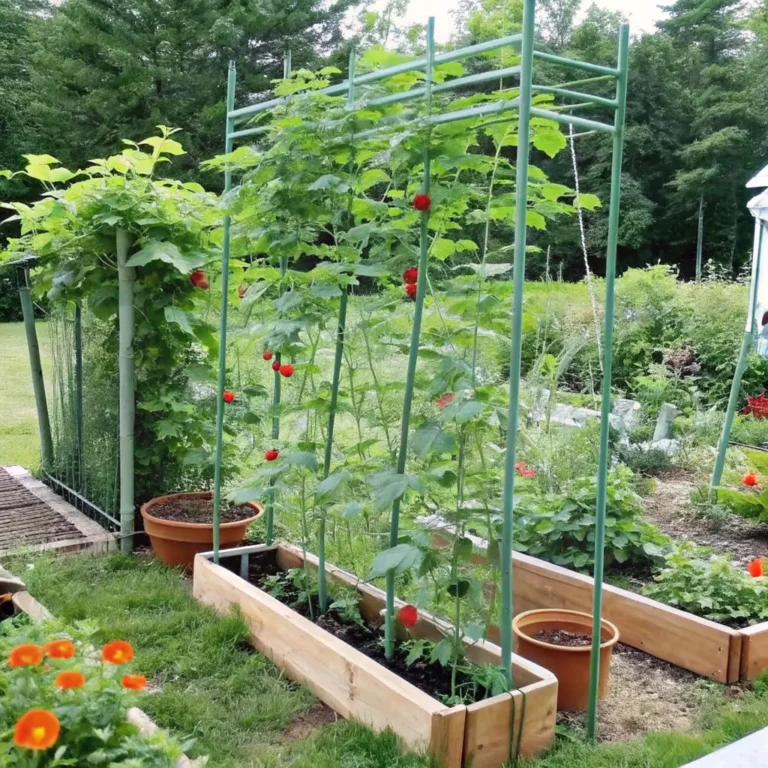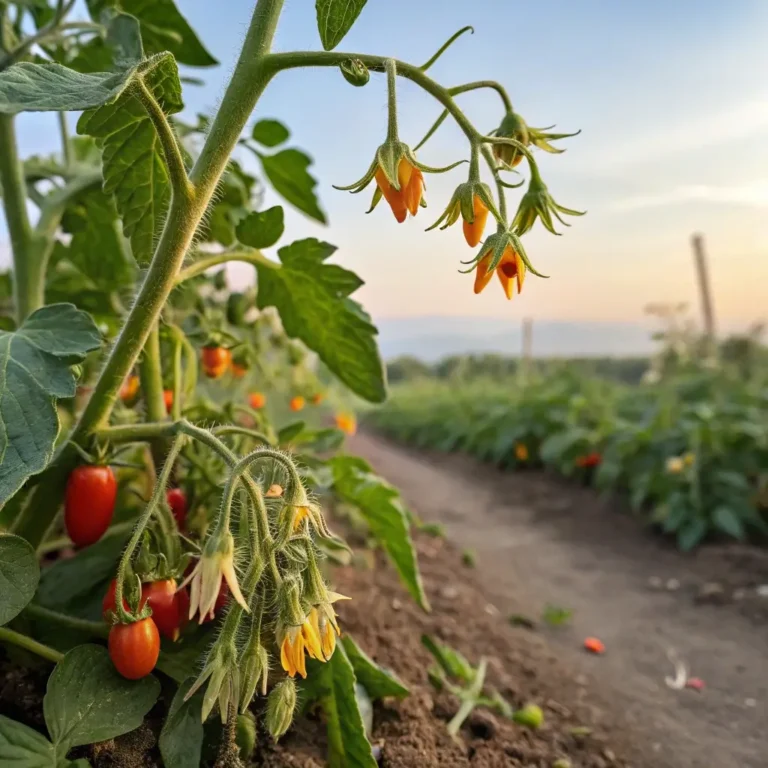How Cold Is Too Cold for Tomato Plants? 5 Key Temps to Know
Table of Contents
Introduction
Have you ever wondered if that unexpected overnight frost just sentenced your tomato plants to death? While many gardeners know tomatoes love warmth, a surprising 32% of home gardeners lose tomato crops to cold damage each growing season simply because they’re unaware of specific temperature thresholds. Understanding how cold is too cold for tomato plants isn’t just helpful—it’s essential for protecting your precious crop from devastating temperature drops. The difference between 45°F and 35°F might not seem dramatic to us, but for your tomato plants, it could mean the difference between thriving and dying. Let’s explore the critical temperature thresholds every tomato grower needs to know.
Temperature Thresholds to Monitor
1. 55°F (13°C) – Growth Slowdown Point
When temperatures consistently drop below 55°F, tomato plants respond by significantly slowing their growth. While not immediately dangerous, prolonged exposure to these temperatures will result in stunted development and delayed fruiting.
What happens physiologically: Below this threshold, the plant’s metabolic processes slow considerably, reducing nutrient uptake and photosynthesis efficiency by up to 30%.
2. 50°F (10°C) – Danger Zone Begins
At temperatures between 45-50°F, tomato plants enter a stress state. While mature plants can typically survive these temperatures, they stop producing flowers and developing fruit.
Key indicator: Look for purplish discoloration on leaves – this indicates phosphorus uptake is being inhibited by the cold.
3. 40°F (4.5°C) – Critical Damage Threshold
When the thermometer drops to 40°F, permanent damage begins occurring to plant tissues. Research shows that exposure to temperatures in this range for more than 6-8 hours can cause irreversible cellular damage to stems and leaves.
Recovery chances: Plants exposed briefly may recover, but productivity will be significantly reduced for the remainder of the season.
4. 32°F (0°C) – Frost Damage Point
This is perhaps the most widely recognized danger temperature. At 32°F, frost forms on plant surfaces and causes immediate damage to most tissue. Unprotected tomato plants will show blackened, water-soaked leaves within hours after exposure.
Mortality rate: Studies indicate approximately 75% of unprotected tomato plants will die after more than 2 hours at or below freezing.
5. 28°F (-2°C) – Fatal Temperature
Even brief exposure to temperatures at or below 28°F is almost always fatal for tomato plants. At this temperature, water inside plant cells freezes, rupturing cell walls and causing catastrophic damage throughout the plant.
Salvage potential: Nearly non-existent. Even if the main stem survives, recovery is unlikely to produce any worthwhile harvest.
Cold Protection Strategies
Row Covers and Cloches
Lightweight row covers can protect plants down to about 28°F, providing a 4-6°F buffer compared to outside temperatures. For smaller gardens, individual cloches (plastic or glass coverings) can increase surrounding temperature by 5-10°F on cold nights.
Effectiveness data: Research from Cornell University shows that proper floating row covers can reduce cold damage incidents by up to 80% during unexpected spring frosts.
Water Jugs as Thermal Mass
Place 1-gallon water jugs painted black around tomato plants to absorb heat during the day and release it at night. Studies show this simple technique can maintain temperatures 3-4°F warmer immediately surrounding plants.
Wall of Water Protectors
These water-filled tepees surrounding individual plants can protect tomatoes down to 16°F due to water’s excellent thermal properties.
Investment return: Though costing $2-4 per plant, these protectors allow for planting 2-3 weeks earlier in most climate zones, extending your growing season by nearly a month.
Identifying Cold Damage on Tomato Plants
Early Signs of Cold Stress
- Curling or cupping of leaves
- Purple discoloration on leaf undersides
- Stunted or stopped growth
- Diminished flowering
Recovery tip: If you spot these symptoms after unexpected cold, a foliar application of seaweed extract can help reduce plant stress by up to 25%.
Severe Cold Damage Symptoms
- Black or dark brown patches on leaves
- Watery, translucent leaf tissue
- Collapsed stems
- Widespread wilting despite adequate soil moisture
Cold-Tolerant Tomato Varieties
If you garden in a region prone to temperature fluctuations, consider these varieties proven to withstand colder conditions:
- Siberian – Can tolerate temperatures down to 38°F
- Sub-Arctic Plenty – Sets fruit at 45°F when other varieties fail
- Oregon Spring – Developed specifically for cool Pacific Northwest conditions
- Stupice – Eastern European heirloom with exceptional cold tolerance
Productivity comparison: Cold-tolerant varieties grown in cool conditions typically yield 30-40% more fruit than standard varieties when temperatures fluctuate below 50°F regularly.
Conclusion
Understanding how cold is too cold for tomato plants empowers you to take appropriate action when temperatures drop. By monitoring weather forecasts and implementing protective measures when temperatures approach 50°F, you’ll dramatically increase your chances of tomato growing success. Remember that different growth stages have different temperature sensitivities – seedlings are much more vulnerable than established plants. With these five key temperature thresholds in mind, you can confidently navigate the challenges of early and late-season temperature fluctuations.
FAQs
Can tomato plants recover from frost damage?
Minor frost damage affecting less than 30% of the plant can often be recovered from, especially if only leaf tissue is affected. Prune damaged areas and provide optimal growing conditions. However, plants experiencing stem freezing rarely recover to full productivity.
How do I harden off tomato seedlings to prevent cold shock?
Gradually expose seedlings to outdoor conditions over 7-10 days, starting with 1-2 hours in a sheltered location. Increase exposure time daily while avoiding temperatures below 50°F. This acclimatization process increases cold tolerance by up to 5°F compared to non-hardened plants.
Can mulching protect tomato plants from cold?
Yes, a 2-3 inch layer of organic mulch insulates soil, keeping root zones 3-5°F warmer during cold snaps. However, mulch alone won’t protect above-ground growth from freezing temperatures.
Should I water tomato plants before a freeze?
Counterintuitively, well-watered soil retains heat better than dry soil. Watering thoroughly the day before an expected frost can raise soil temperature by 2-4°F, providing modest protection to the root zone.
At what soil temperature should I plant tomatoes outdoors?
Wait until soil temperatures consistently reach 60°F (15.5°C) at a 4-inch depth for optimal root development. Planting in colder soil can stunt growth for the entire season, reducing yields by up to 25%.







